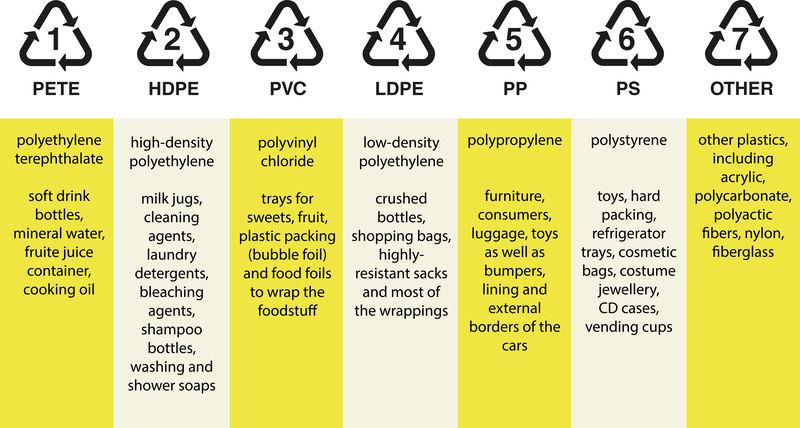Reducing Everyday Single-Use Plastic
Plastic pollution has become a ubiquitous environmental issue, impacting ecosystems, marine life, and human health across the globe. Among the leading contributors to this crisis is single-use plastic, which makes up a significant proportion of the plastic waste found in our oceans and landfills. Reducing the consumption of single-use plastics in our daily lives is a crucial step toward a sustainable future. This article aims to shed light on the importance of reducing single-use plastics and provide practical tips to help make this transition.
Understanding Single-Use Plastic
Single-use plastics are products that are designed for one-time use before being discarded. These items include plastic bags, straws, coffee stirrers, soda and water bottles, and most food packaging. The convenience of single-use plastics has led to their pervasive presence in our daily routines.
However, their convenience comes at a significant environmental cost. Since plastic is not biodegradable, it breaks down into smaller fragments known as microplastics over time. These microplastics can persist in the environment for hundreds, or even thousands, of years, causing long-term pollution.

The Environmental Impact of Single-Use Plastics
Single-use plastics greatly affect various aspects of the environment:
- Marine Pollution: The oceans bear the brunt of plastic pollution. Marine animals, including fish, seabirds, and turtles, often mistake plastic waste for food, leading to ingestion and entanglement. This can cause injuries, disrupt digestion, and even lead to death.
- Soil and Water Contamination: As plastics break down, they release harmful chemicals into the soil and water. These chemicals can seep into the groundwater, affecting drinking water supplies and agricultural productivity.
- Carbon Footprint: The production and disposal of plastic contribute significantly to greenhouse gas emissions. Manufacturing plastic relies on petrochemicals, and incinerating plastic waste releases carbon dioxide and other harmful emissions.
Why Reducing Single-Use Plastic Matters
Reducing single-use plastic is essential for several reasons:
- Preserving Wildlife: By cutting down on plastic waste, we can protect marine and terrestrial animals from the dangers of ingestion and entanglement.
- Promoting Health: Microplastics and chemicals released from plastics can enter the food chain, posing potential health risks to humans. Reducing plastic use helps in minimizing these risks.
- Sustainable Resource Use: Plastics are made from non-renewable fossil fuels. By limiting plastic consumption, we reduce our reliance on these limited resources.
- Climate Change Mitigation: Reducing plastic production and disposal can lower greenhouse gas emissions, contributing to climate change mitigation efforts.
Practical Tips to Reduce Single-Use Plastics
Making small changes in our daily habits can collectively make a significant impact. Here are some actionable steps to help reduce single-use plastics:
1. Carry Reusable Bags
One of the easiest ways to reduce single-use plastics is to carry reusable shopping bags. These bags are durable, often more capacious, and can be used multiple times. Keeping a few reusable bags in your car or bag ensures that you never have to rely on plastic bags when shopping.
2. Use Reusable Water Bottles and Coffee Cups
Single-use plastic bottles and coffee cups contribute enormously to plastic waste. By investing in a high-quality reusable water bottle and a coffee cup, you can drastically cut down on this waste. Many cafes even offer discounts to customers who bring their own cups.
3. Opt for Eco-Friendly Food Storage
Instead of using plastic wrap or single-use plastic containers, switch to beeswax wraps, glass containers, or stainless steel lunch boxes for storing food. These alternatives are not only better for the environment but are often more effective at preserving food.
4. Say No to Plastic Straws and Cutlery
Plastic straws and cutlery are commonly found in takeout meals and at restaurants. Consider carrying a set of reusable cutlery and a straw made from metal or bamboo. Many establishments are also beginning to offer paper straws or other eco-friendly alternatives.
5. Choose Products with Minimal Packaging
When shopping for groceries or other items, opt for products with minimal or eco-friendly packaging. Buying in bulk can also reduce the amount of plastic packaging you bring into your home.
6. Support Companies with Sustainable Practices
Many companies are moving toward sustainable practices by using biodegradable packaging and reducing plastic usage. Support these companies by choosing their products over those that still rely heavily on plastic. Consumer demand can drive further corporate responsibility and innovation.
7. Participate in Clean-Up Drives
Community clean-up drives and beach cleans are fantastic ways to directly combat plastic pollution. These activities not only help clean the environment but also raise awareness about the plastic pollution crisis.
Policy Changes and Corporate Responsibility
While individual efforts are critical, systemic change driven by policy adjustments and corporate responsibility can amplify the impact. Governments can enforce regulations that limit single-use plastics and promote recycling. Policies like banning plastic bags, straws, and other single-use items have already been successfully implemented in several regions.
Corporations also have a significant role to play. By adopting sustainable practices, innovating biodegradable alternatives, and supporting the circular economy, businesses can considerably reduce plastic waste. Corporate social responsibility initiatives and partnerships with environmental organizations can further promote sustainable practices.

Innovation and Alternatives to Plastic
Researchers and entrepreneurs worldwide are developing innovative solutions as alternatives to traditional plastics. Some of these include:
- Biodegradable Plastics: Made from renewable sources like corn starch, these plastics can decompose under specific conditions, reducing environmental impact.
- Edible Packaging: Certain startups are creating packaging from edible materials like seaweed and rice, offering a zero-waste solution.
- Recycled Materials: Utilizing recycled plastics in manufacturing can reduce the demand for virgin plastic and promote the circular economy.
- Natural Fibers: Packaging and products made from natural fibers like hemp, jute, and bamboo are gaining popularity as sustainable alternatives.
Conclusion
Reducing everyday single-use plastic is not just an environmental necessity but also a way to promote healthier communities and a more sustainable future. While individual actions form the foundation, collective societal efforts magnify the impact. By embracing reusable alternatives, supporting eco-friendly companies, and advocating for policy changes, we can significantly mitigate the plastic pollution crisis.
Incorporating modest changes into our daily routines can lead to substantial benefits for the planet. Together, we can pave the way toward a cleaner, greener earth for future generations.
